




生物医学工程学术会议有不同的层次,如IEEE-EMBS组织的国际年会,区域性生物医学工程国际会议,如亚太生物医学工程国际会议(APCBME:Asia-Pacific Conference on Biomedical Engineering),欧洲生物医学工程国际会议(EMBEC,由EAMBES:European Alliance for Medical and Biological Engineering and Science主办)。
会议的INFORMATION页规定了论文投递(submission)的截止日期(deadline),论文保证金(deposit fee),注册(registration)截止日期,注册费(registration fee),以及提交版权表(copyright form)或出版许可(license to publish)的截止日期等,一定要仔细阅读。按国际惯例,这些费用,一般通过信用卡(credit card)支付。如果参加国外的学术会议,当在线提交论文时,就要注明需要邀请信(invitation letter)。在接到论文被接受通知时,一般立即发来邀请信,这时应该迅速启动护照(passport)和签证(visa)的申请程序。
生物医学工程的重要国际会议,可在IEEE-EMBS的网站http://www. embs. org/上查到。学术会议预告的例子如下:
Upcoming Conferences
This list of conferences is maintained by the EMBS Executive Office. Should you wish to add to this list or to apply for IEEE-EMBS to be a co-sponsor of your conference, please contact Ms. Jodi Strock.
Annual International Conferences | Special Topic Conferences|
Summer Schools | Co-Sponsored Conferences | Technically Co-sponsored
Summer Schools | Technically Co-Sponsored Conferences | Other Conferences
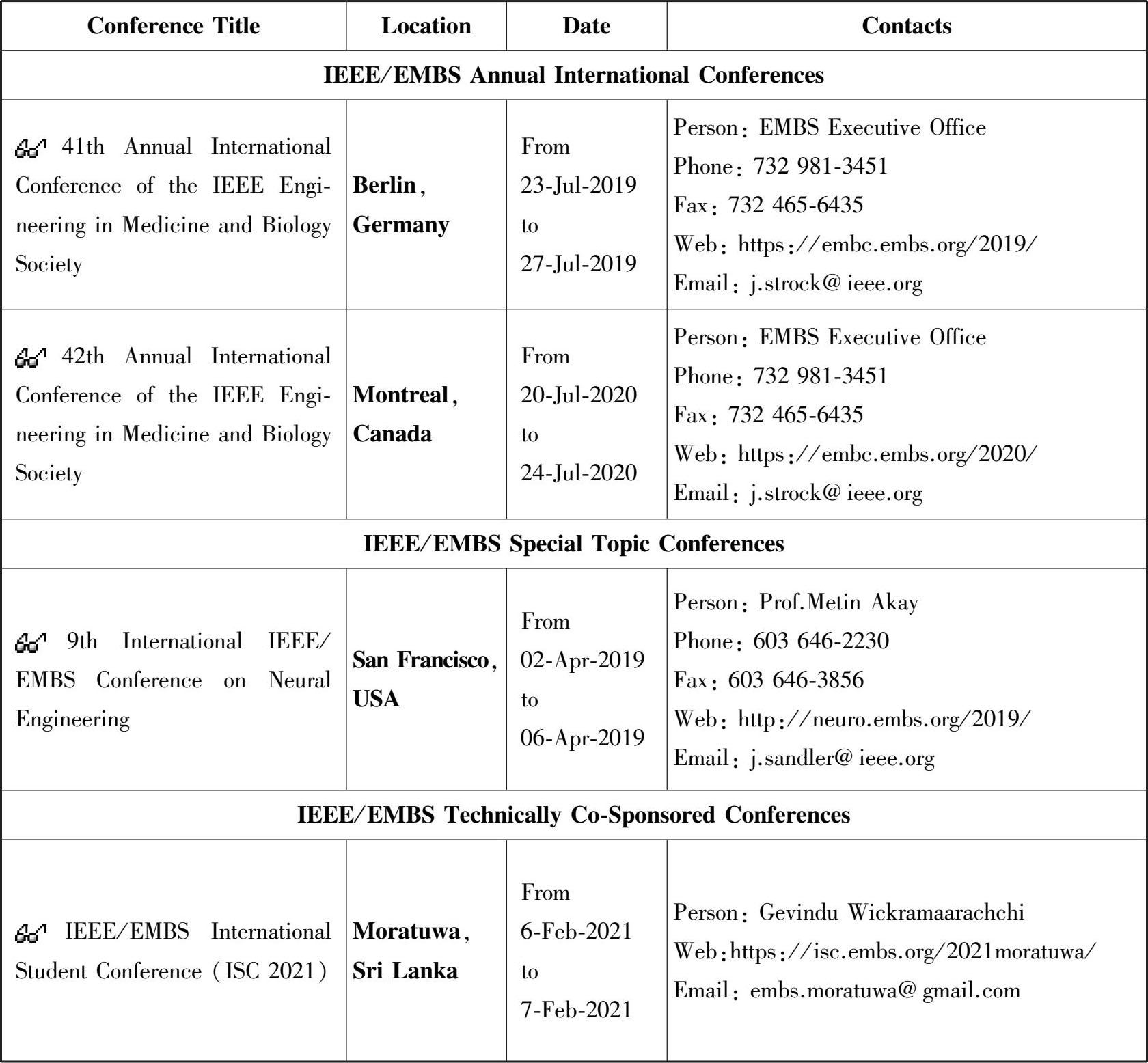
Continued
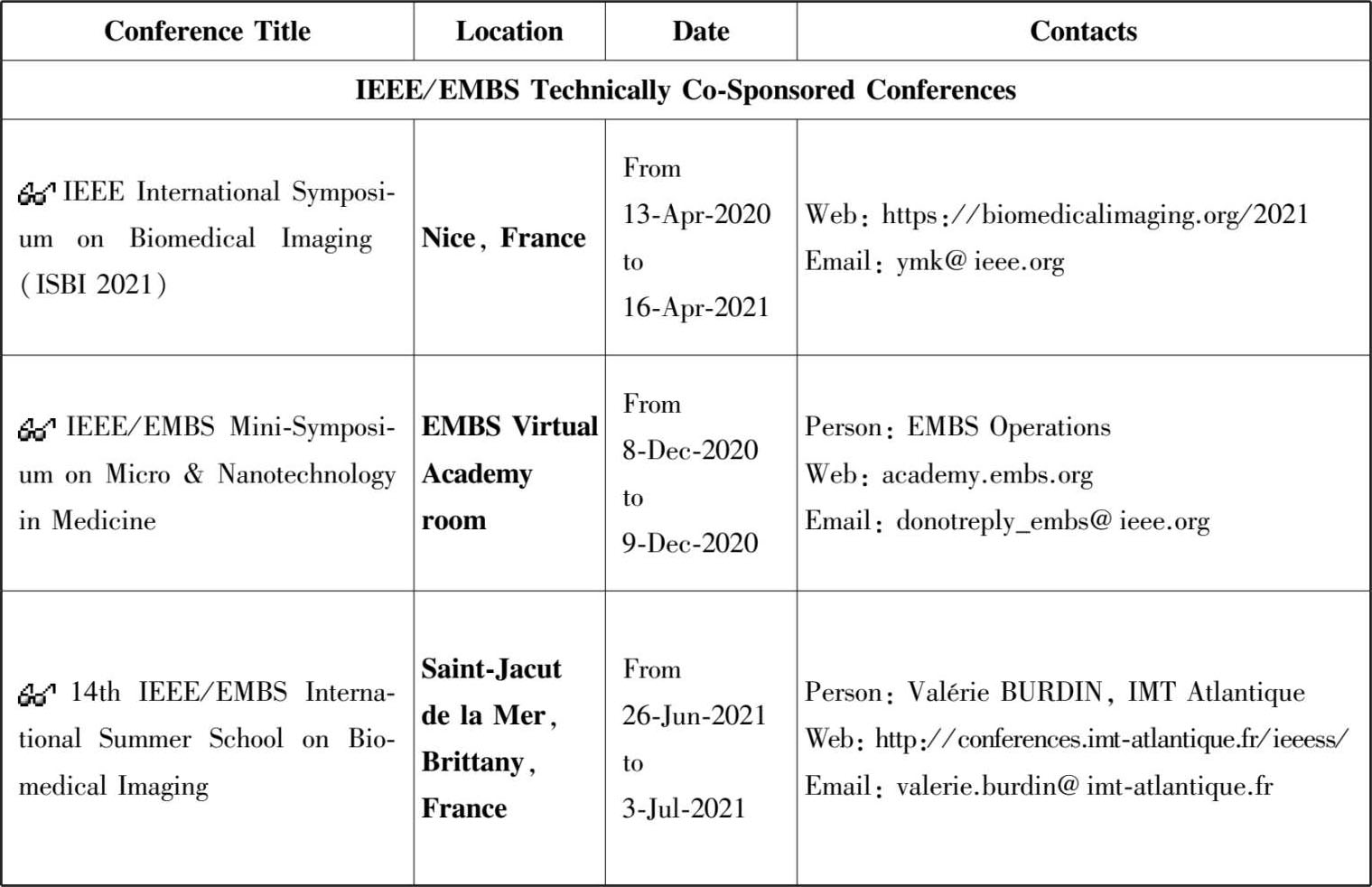
对于会议论文的页数,不同的会议有不同的要求,一般 1~4 页,不过有的只要求规定字数的摘要,“Call for Paper”有详细的规定,而且一般都有模板格式供参考。论文一般要求PDF文件格式,此外也有要求其他格式的。如双栏排版论文格式样张如下。
Abstract—These instructions give you basic guidelines for preparing papers for the EMBS 2003 Conference Proceedings. Papers up to 4 pages should be submitted using this format. This document is a template for Microsoft Word . If you are reading a paper version of this document, please download the electronic file from the Conference website so you can use it to prepare your manuscript. Abstract should not exceed 200 words. To allow retrieval by CD-ROM software, please include appropriate key words in your abstract, in alphabetical order, separated by commas.
Key words —Fonts,formatting,margins
Your goal is to simulate, as closely as possible, the usual appearance of typeset papers in the IEEE Transactions on Biomedical Engineering . One difference is that the authors’affiliations should appear immediately following their names. For items not addressed in these instructions, please refer to a recent issue of the Transactions.
All papers must be submitted electronically in pdf format. Prepare your paper using a letter page size of 21.59 cm×27.94 cm(8.5"×11").
1) Type sizes and typefaces : The best results will be obtained if your computer word processor has several type sizes. Try to follow the type sizes specified in Table I as best as you can. Use 14 point bold, capital letters for the title, 12 point Roman(normal)characters for author names and 10 point Roman characters for the main text and author's affiliations.
2) Format : In formatting your page, set top and bottom margins to 25 mm(1"). Left and right margins should be 19 mm(3/4").Use a two-column format where each column is 86 mm(33/8")wide and spacing of 6 mm(1/4")between columns. Indent paragraphs by 6 mm(1/4").
Left and right-justify your columns. Use tables and figures to adjust column length. Use automatic hyphenation and check spelling. All figures, tables, and equations must be included in-line with the text. Do not use links to external files.
Graphics should be in TIFF, 600 dpi(1 bit/sample)for line art(graphics, charts, drawings or tables)and 220 dpi for photos and gray scale images.
Position figures and tables at the tops and bottoms of columns. Avoid placing them in the middle of columns. Large figures and tables may span across both columns. Figure captions should be below the figures; table names and table captions should be above the tables.Avoid placing figures and tables before their first mention in the text. Use the abbreviation“Fig.”even at the beginning of a sentence.
Figure axis labels are often a source of confusion. Try to use words rather than symbols. As an example, write the quantity“Magnetization,”or“Magnetization M ,”not just“ M ”. Put units in parentheses. Do not label axes only with units. As in Fig. 1, for example, write“Magnetization(A/m)”or“Magnetization(A·m -1 ),”not just“A/m”. Do not label axes with a ratio of quantities and units.For example, write“Temperature(K)”, not“Temperature/K”.
Multipliers can be especially confusing.Write“Magnetization(kA/m)”or“Magnetization(10 3 A/m).”Do not write“Magnetization(A/m)×1, 000”because the reader would not know whether the top axis label in Fig. 1 meant 16, 000 A/m or 0.016 A/m. Figure labels should be legible, approximately 10point type.
Number citations consecutively in square brackets[1]. The sentence punctuation follows the bracket[2]. Refer simply to the reference number, as in[3]. Do not use“Ref.[3]”or“reference[3]”except at the beginning of a sentence:
“Reference[3]shows...”
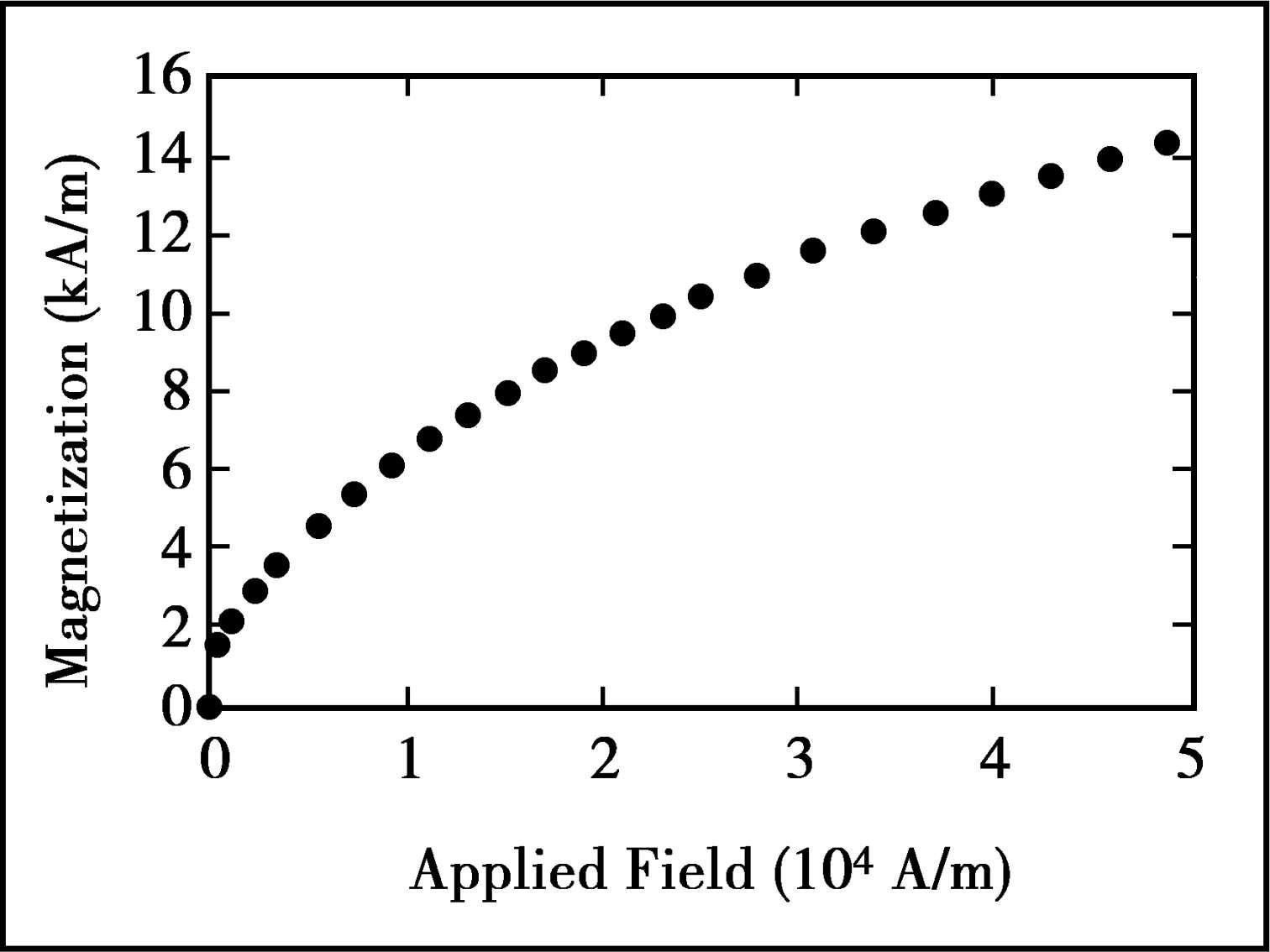
Fig. 1.Magnetization as a function of applied field. Note how the caption is centered in the column.
Number footnotes separately in superscripts.Place the actual footnote at the bottom of the column in which it was cited. Do not put footnotes in the reference list. Use letters for table footnotes(see Table I). IEEE Transactions no longer use a journal prefix before the volume number. For example, use“IEEE Trans. Magn. , vol. 25,”not“vol. MAG 25.”
TABLE Ⅰ TYPE SIZES FOR CAMERA-READY PAPERS
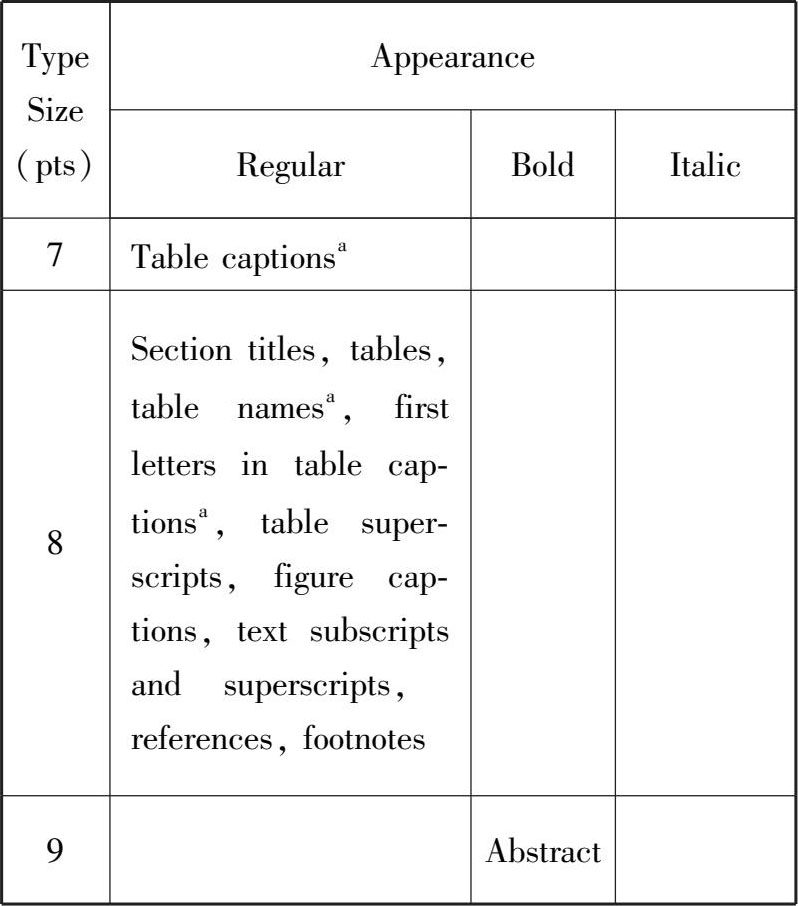
续表
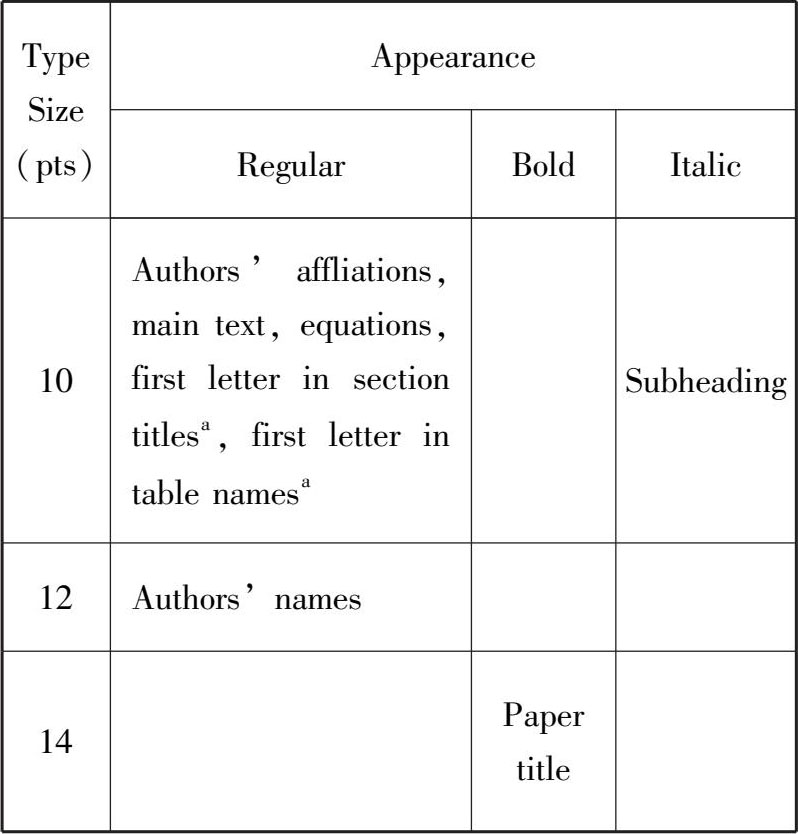
a Capital letters
Please note that the references at the end of this document are in the preferred referencing style. Give all authors’names; do not use“ et al .”unless there are six authors or more. Use a space after authors’initials.Papers that have not been published, even if they have been submitted for publication, should be cited as“unpublished”[4]. Papers that have been accepted for publication should be cited as“in press”[5].
Capitalize only the first word in a paper title, except for proper nouns and element symbols. For papers published in translation journals, please give the English citation first, followed by the original foreign-language citation[6].
Define abbreviations and acronyms the first time they are used in the text, even after they have already been defined in the abstract.Abbreviations such as IEEE, SI, MKS, CGS, ac, dc, and rms do not have to be defined.Abbreviations that incorporate periods should not have spaces: write“C.N.R. S.,”not“C.N. R. S.”Do not use abbreviations in the title unless they are unavoidable(for example,“IEEE”in the title of this article).
Number equations consecutively with equation numbers in parentheses flush with the right margin, as in(1). To make your equations more compact, you may use the solidus(/), the exp function, or appropriate exponents. Use a long dash rather than a hyphen for a minus sign. Use parentheses to avoid ambiguities in denominators. Punctuate equations with commas or periods when they are part of a sentence, as in

Be sure that the symbols in your equation have been defined before the equation appears or immediately following. Italicize variables( T might refer to temperature, but T is the unit tesla). Refer to“(1)”, not“Eq.(1)”or“equation(1)”, except at the beginning of a sentence:“Equation(1)is’”
The Roman numerals used to number the section headings are optional. If you do use them, number INTRODUCTION, but not ACKNOWLEDGMENT and REFERENCES, and begin subheadings with letters. Use one space after periods and colons. Hyphenate complex modifiers:“zero-field-cooled magnetization.”Avoid dangling participles, such as,“Using(1), the potential was calculated.”Write instead,“The potential was calculated using(1)”, or“Using(1), we calculated the potential”.
Use a zero before decimal points:“0.25”, not“25”. Use“cm 3 ”, not“cc”. Indicate sample dimensions as“0.1 cm×0.2 cm”, not“0.1×0.2 cm 2 ”. The abbreviation for“seconds”is“s”, not“sec”. Do not mix complete spellings and abbreviations of units: use“Wb/m 2 ”or“webers per square meter,”not“webers/m 2 ”. When expressing a range of values, write“7 to 9”or“7-9”, not“7~9”.Spell units when they appear in text:“...a few henries,”not“...a few H”. If your native language is not English, try to get a native English-speaking colleague to proofread your paper. Number each page at top, right corner:“1 of 3”,“2 of 3”, etc.
Use either SI(MKS)or CGS as primary units.(SI units are strongly encouraged.)English units may be used as secondary units(in parentheses). This applies to papers in data storage. For example, write“15 Gb/cm 2 (100 Gb/in 2 )”. An exception is when English units are used as identifiers in trade, such as“3.5-inch disk drive”.
Avoid combining SI and CGS units, such as current in amperes and magnetic field in oersteds. This often leads to confusion because equations do not balance dimensionally. If you must use mixed units, clearly state the units for each quantity that you use in an equation.
The word“data”is plural, not singular.The subscript for the permeability of vacuum μ 0 is zero, not a lowercase letter“o”. In American English, periods and commas are within quotation marks, like“this period.”A parenthetical statement at the end of a sentence is punctuated outside of the closing parenthesis(like this).(A parenthetical sentence is punctuated within the parentheses.)A graph within a graph is an“inset”, not an“insert”.The word“alternatively”is preferred to the word“alternately”(unless you really mean something that alternates). Use the word“whereas”instead of“while”(unless you are referring to simultaneous events). Do not use the word“essentially”to mean“approximately”or“effectively”. Do not use the word“issue”as a euphemism for“problem”.
Be aware of the different meanings of the homophones“affect”(usually a verb)and“effect”(usually a noun),“complement”and“compliment”,“discreet”and“discrete”,“principal”(e. g.,“principal investigator”)and“principle”(e. g.,“principle of measurement”). Do not confuse“imply”and“infer”.
Prefixes such as“non”,“sub”,“micro”,“multi”, and“ultra”are not independent words; they should be joined to the words they modify, usually without a hyphen. There is no period after the“et”in the Latin abbreviation“ et al ”.(it is also italicized). The abbreviation“i. e.”, means“that is,”and the abbreviation“e.g.”, means“for example”(these abbreviations are not italicized).
The preferred spelling of the word“acknowledgment”in American English is without an“e”after the“g”. Use the singular heading even if you have many acknowledgments.Avoid expressions such as“One of us(J.Q.A.)would like to thank...”. Instead, write“J. Q.Author thanks...”. Sponsor and financial support acknowledgments are placed in the unnumbered footnote on the first page.
[1]Tompkins W J.Biomedical digital signal processing[M]. Englewood Cliffs, NJ, USA: Prentice Hall, 1993.
……
[18]Vidmar R J. On the use of atmospheric pressure plasmas as electromagnetic reflectors and absorbers[J]. IEEE Transactions on Plasma Science, 1990, 18(4): 733-741.
会议邀请信由会议主办者(sponsor)发出,一般先通过Email发来电子邀请函,以便用它办理护照和签证,然后通过常规邮件寄来签署了的正式文本。邀请信例子如下:
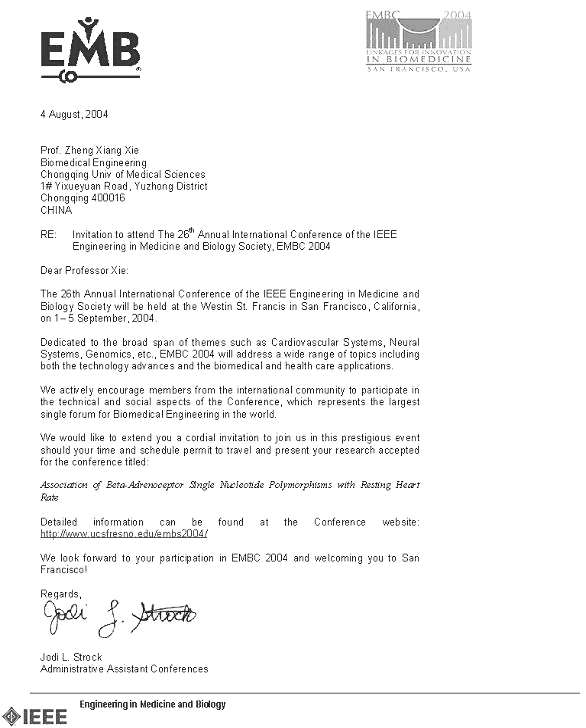
* Dept. of Biomedical Engineering, Chongqing University of Medical Sciences, Chongqing, P. R.China Postcade: 400016 Chongqing, P. R. China. E-mail Addr: bmezxxie@ public.cta.cq.cn
** The Division of Cardiology, The Second Clinical College, Chongqing University of Medical Sciences, Chongqing, P. R. China. Postcode: 400010 Chongqing P. R. China.
Abstract—The banded running spectra of Heart Period Signal(HPS)before and after physical or pharmaceutical test were compared by Comparative Banded Running Spectra(CBRS)technique to study the clinic significance of HPS ultra-low frequency band(ULF: 0.003-0.040 Hz). CM5 lead Electrocardiosignal(ECS)from body surface was acquired at 300 Hz sampling rate, in 10 minutes, to ensure to get more than 512 heart periods(HP). R-R intervals from ECS were extracted to form digital time series, which were called as HPS(n), using double searching method by searching maximal derivative and maximum. 16 HP were moved and 256 windowed(Blackman window)FFT for HPS(n)were completed each time. Banding the power spectra into three bands(Ultra-low frequency band, ULF: 0.003-0.04 Hz; Low frequency band, LF: 0.04-0.14 Hz; High frequency band, HF: 0.14-0.5 Hz)formed the three banded self-normalized(or self-adapted)running spectra, and CBRS before and after physical or pharmaceutical test were formed at the same scale. From graphic and data results, it can be concluded that ULF band of HPS spectra reflect the sympathetic activity; LF band is a mixed band or transition band which generally represents both the sympathetic and the parasympathetic activity; sometimes the sympathetic is stronger; sometimes it is weaker; sometimes it is none. HF band reflects the parasympathetic activity.
Key words: Heart Period Signal Power Spectra Analysis Comparative Banded Running Spectra Sympathetic Nerve System Parasympathetic Nerve System
A long time ago, it was known that R-R interval(called as Heart Period, HP)of Electrocardiosignal(ECS)varies with time[1], many people called it Heart Rate Variability(HRV), and the digital time series formed by R-R intervals were called Heart Rate Variability Signal(HRVS)[2]. Precisely it should be called Heart Period Signal(HPS)[3, 4]. Freeman[5]called the method to use the power spectra of HPS to characterize the autonomic nerve system function the modern method to test autonomic nerve system function.About how to band the HPS power spectra and to explain the significance of each band have been at issue. There are to separate it into two bands, or three bands or even four bands. The physiological and clinic significance of each band was still disputed[4, 6-8]. What possessed the representative significance was a special report[4]presented by Task Force of the European Society of Cardiology and the North American Society of Pacing and Electrophysiology(17 members). The report pointed out that“The physiological explanation of VLF component is much less defined, and the existence of a specific physiological process attributable to these heart period changes might even been questioned....Thus, VLF assessed from short-term recordings(≤5 minutes)is a dubious measure and should be avoided when the PSD of short-term ECGs is interpreted.”Some people claimed to use the power ratio of LF to HF to reflect the sympathetic activity[6, 7], the others proposed to use it to represent the balance and regulation features[6, 8].
The modified Valkama method to divide the HPS power spectra into three bands(ULF: 0.003-0.04 Hz, LF: 0.04-0.14 Hz, HF: 0.14-0.50 Hz)was adopted in our study[9-11]. Using CBRS method to compare the HPS running power spectra before and after physical or pharmaceutical test, the conclusions can be drawn as follows: ULF band of HPS power spectra reflects the sympathetic and the parasym-pathetic activity. LF band is a transition band.Possibly it contains components of both the sympathetic and the parasympathetic. Sometimes it has more sympathetic component, sometimes it has less sympathetic component, sometimes there is no sympathetic component in it.
The disposable electrodes with Ag/AgCl pregelled, CM5 lead, isolated and floating amplifier(gain is 1, 500)and ADC with 12 bits precision were used to acquire the digital electrocardiosignal(ECS(n))controlled by a PC computer with CPU 80586, at sampling rate 300 Hz, in 10 minutes.
The double searching techniques for searching the maximal derivative and maximum were used to locate the peaks of R, P and T waves precisely and to extract R-R, P-P, T-T intervals to form three digital time series. In this article only the digital time series of R-R intervals, called as HPS(n), were analyzed.Each time τ =16 HP were moved, and then windowed FFT was completed 16 times to form running spectra:

Where n , k =0, 1, 2,..., N -1, τ =16 HP, j =0, 1, 2,..., 16(the same below).
In above formula B( n )is Blackman window function:
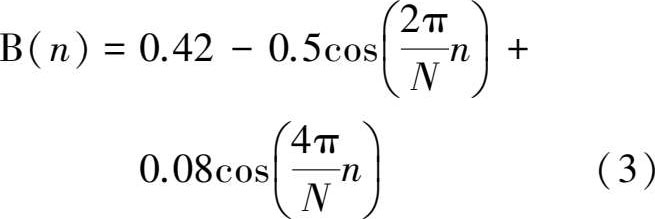
Power spectra converted to body surface values were given, not the logarithmic spectra. Fourier transformation satisfies Parseval theorem. Then power spectra were divided into three bands(ULF: 0.003-0.04 Hz, LF: 0.04-0.14 Hz, HF: 0.14-0.50 Hz). Banded self-normalized(or called as self-adapted)was used to form Banded Running Spectra(RBS).CBRS in the same scale were formed from RBS before and after test. Total power(TFP), absolute power(ULF: PVV; LF: PLV; HF: PHV), relative power(ULF: PVR; LF: PLR; HF: PHR)in three bands, ratio of ULF power to HF power(RVH)and ratio of LF power to HF power(RLH)before and after tests were computed respectively as follows:
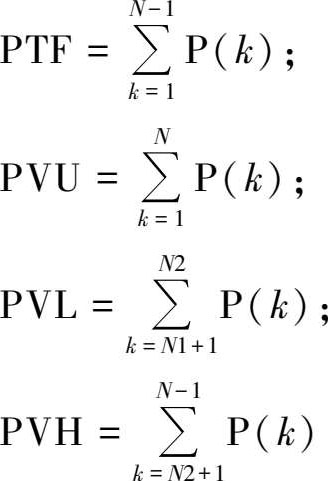
Where N 1=0.04/ f 0 , N 2=0.14/ f 0 , N =256, f 0 =1/MHP, MHP is mean heart period.RPU=PVU/PTF; RPL=PVL/PTF; RPH=PVH/PTF; RUH=PVU/PVH; RLH=PVL/PVH. Means and standard deviations of above nine parameters before and after tests were calculated.
The CBRS for HPS from a healthy volunteer in the supine and then at the orthogonal was shown in Figure 1. The graph before the mark“test”is in the supine and the graph behind the mark“test”is at the orthogonal. From Figure 1, it can be seen that the powers in HF, LF and ULF bands at the orthogonal were lower than that in the supine. In the light of varying tendency in the CBRS, the variation tendency of the right portion in LF band was the same as the variation tendency in HF band, and the variation tendency of the left portion in LF band was the same as that in ULF band. The CBRS for HPS from another healthy volunteer in the supine and then at the orthogonal was shown in Figure 2. The same result as in Figure 1 can be gotten. After analyzing CBRS from 39 healthy volunteers aged 20 to 29 years old, results were consistent with the above two types.
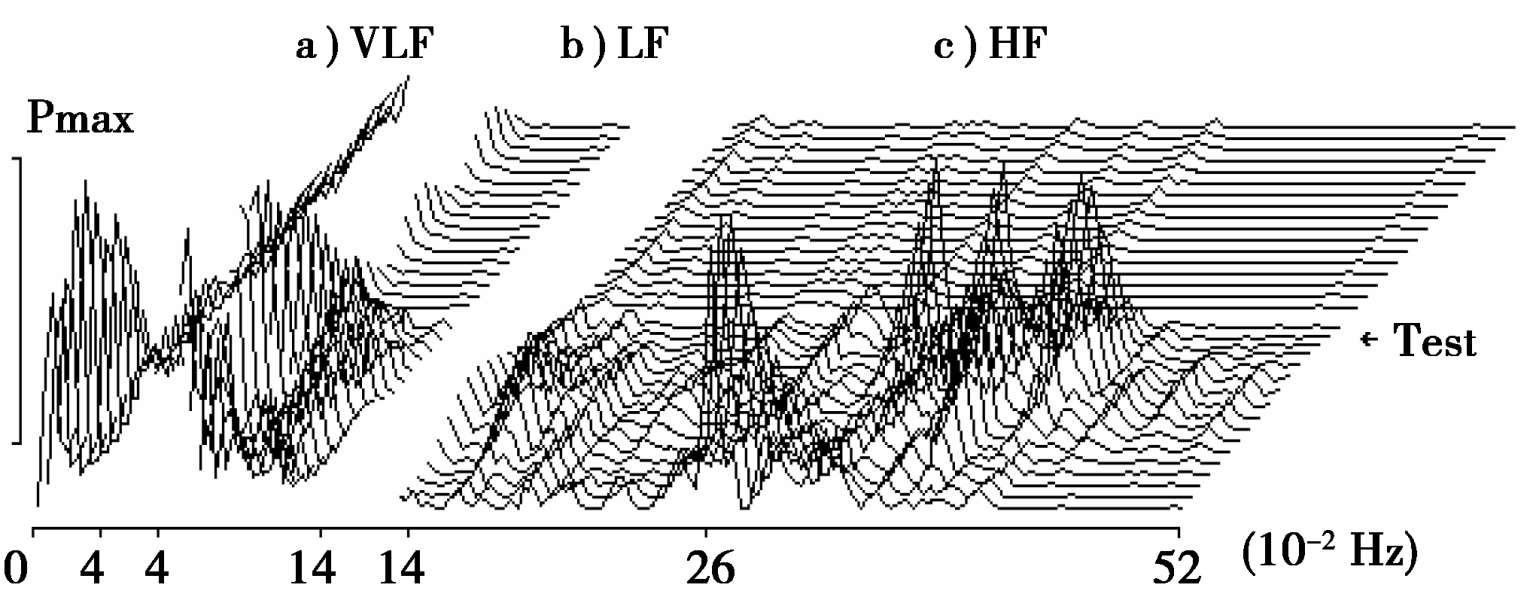
Fig. 1 CBRS for a volunteer in orthogonal test
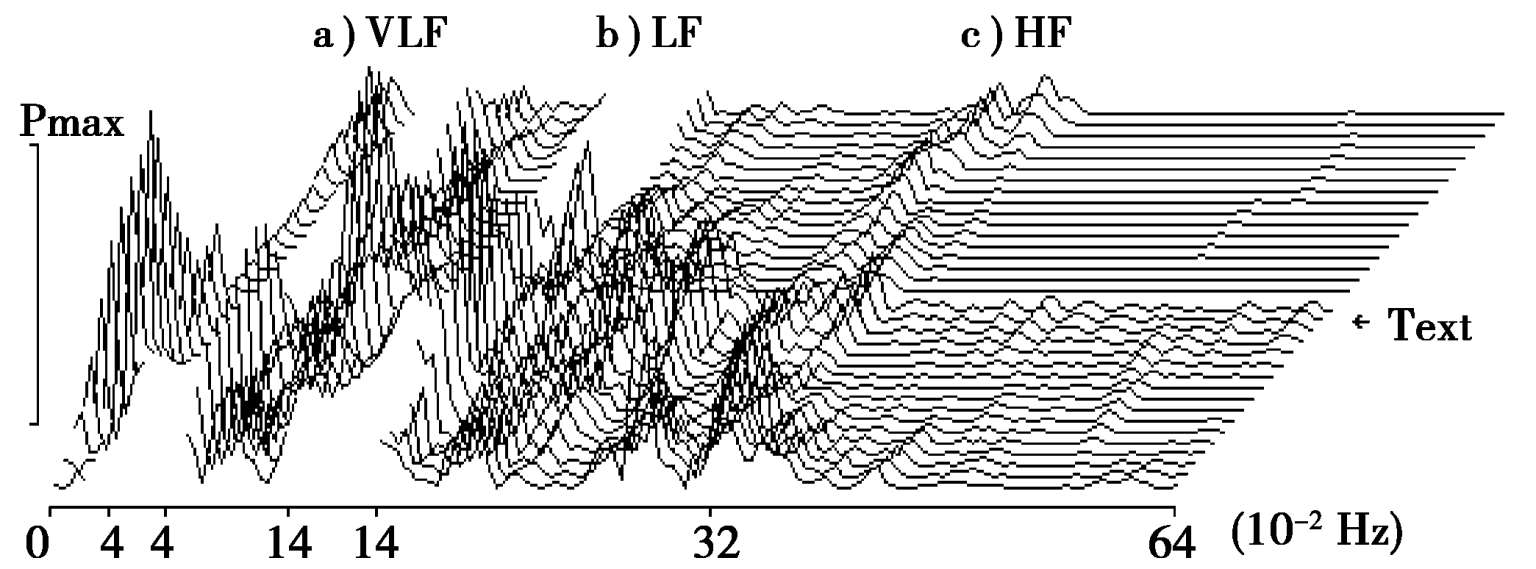
Fig. 2 CBRS for another volunteer in orthogonal test
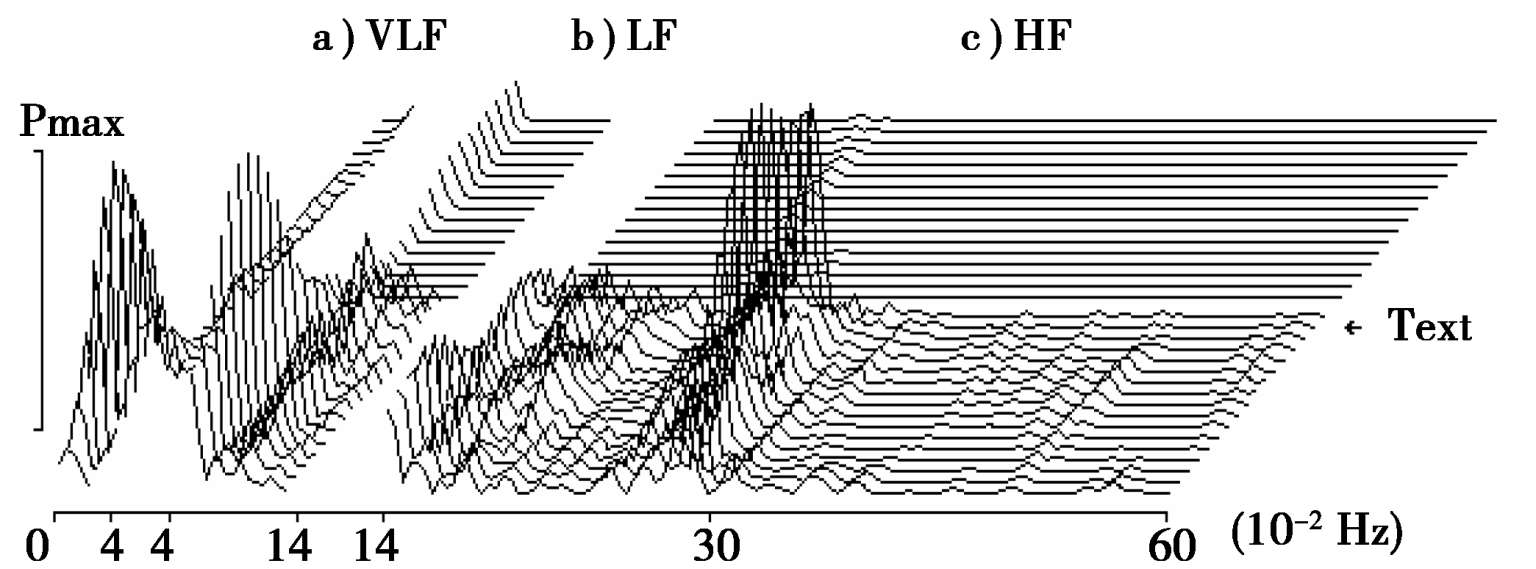
Fig. 3 CBRS for a volunteer in atropine test
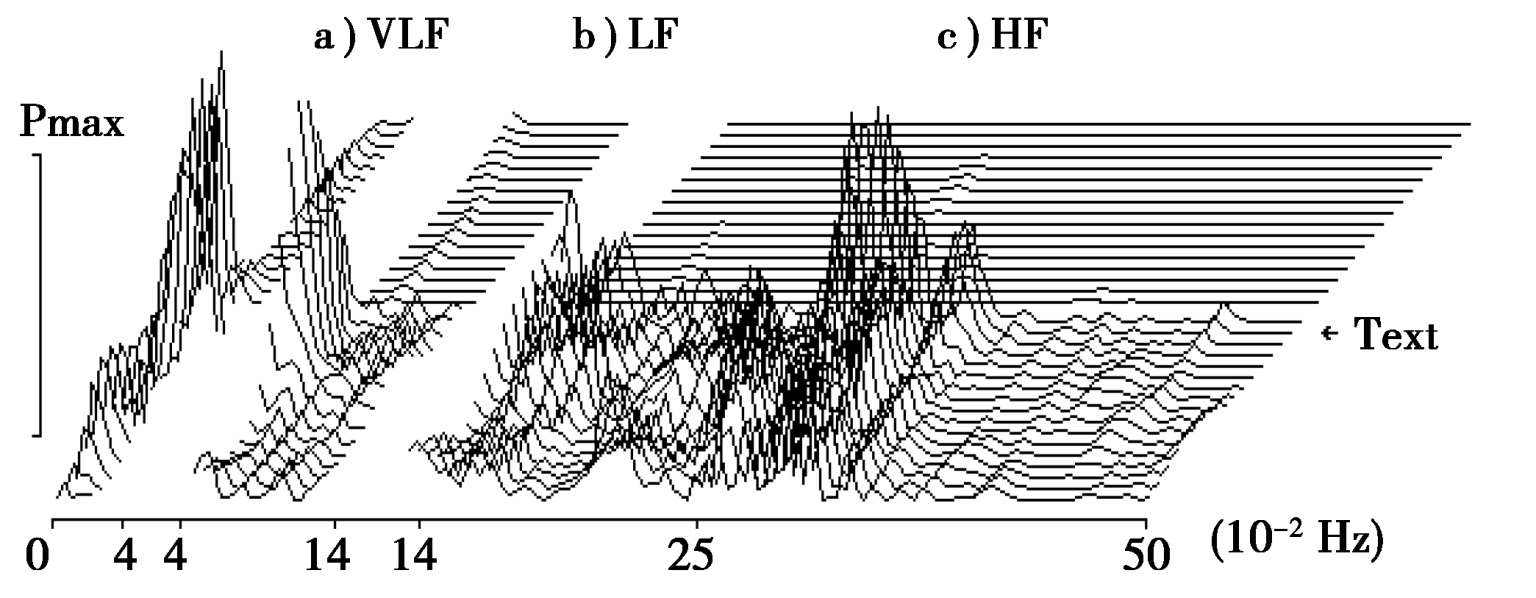
Fig. 4 CBRS for another volunteer in atropine test
The CBRS of HPS from a healthy volunteer before and after administrating atropine(i. v.2 mg/50 kg)was shown in Figure 3. The variational situation was similar to that in Figure 1.
The CBRS of HPS from another healthy volunteer before and after administrating atropine(i. v. 2 mg/50 kg)was shown in Figure 4. The variational situation was similar to that in Figure 2. The results of CBRS analysis for 7 healthy volunteers before and after administrating atropine were similar to the above two types. The CBRS of HPS from a healthy volunteer before and after administrating Betaloc(i.e.metoprolol tartrate, p.o.50 mg)was shown in Figure 5.
The CBRS for 12 healthy volunteers before and after exercise(treadmill exercise test)were measured and their variation tendencies were similar to that in two types for the orthogonal test, basically.
The means and varying rates above mentioned 9 parameters for 12 healthy volunteers before and after exercise were listed in Table 1. The means and varying rate above mentioned 9 parameters for 7 healthy volunteers before and after administrating atropine were listed in Table 2. The means and varying rate above mentioned 9 parameters for the healthy volunteer before and after administrating Betaloc were listed in Table 3. As a reference, the mean of heart rate, MHR, was listed in all tables.
1. From the variational tendency in CBRS for the orthogonal and atropine tests, it could be seen that LF band was a mixed band reflecting the sympathetic and the parasympathetic activities. Sometimes component related to the parasympathetic in LF band was more than that of the sympathetic. So it can be considered that LF band is a transition band, indeed.
2. From table 1 and 2, it could be seen that after tests, the absolute power values decreased, but the relative parameters, PVR, RVH, RLH and MHR increased. It can demonstrate that PVR is a reasonable parameter to represent the sympathetic activity because the two tests made the sympathetic nerve tense.The variation of RVH was much bigger than that of RLH(e.g. 82.6% vs 61.5% for exercise test and 61.9% vs 0.7% for atropine test).The digits showed that the sensitivities of RLH on the tests were much lower than that of RVH. So no matter what significance RLH has, it was not a good index.
Table 1 The variations of spectral parameters before and after the exercise test

Table 2 The variations of spectral parameters before and after the atropine test

Table 3 The variations of spectral parameters before and after Betaloc test

3. From table 3, It could be known that PVV, PVR, RVH, RLH and MHR decreased after administrating Betaloc, but PLV, PHV, TFP, PLR and PHR increased. The result also demonstrates that the use of PVV, especially PVR, to reflect the sympathetic activity was suitable. The fact that the decreasing of RLH was obviously lower than that of RVH demonstrated once more that the sensitivity of RLH was much lower than that of RVH.
4. From table 1, 2 and 3, it could be seen that the variation of PVL followed PVH and PTF, and the variation of RPL followed RPH, so LF band probably included more parasym-pathetic component statistically. The result was consistent with the graphic results in CBRS.
在会议上提出(representation)论文分两种方式:口头报告(oral representation)和墙报(poster representation)。提出方式的决定,有的由会议的程序委员会(program committee)决定,然后通知作者,有的由论文提交者(submitter)在提交论文时在线(online)选择,在程序委员会确定你提出的时间、地址前可以在线改变。以poster方式提出者,必须在程序委员会指定的时间在场(站在自己的poster前面),以便同与会者讨论,交流和回答问题,“poster”的面积由程序委员会指定。口头报告者一般要制备电子幻灯片,如ppt文件。在规定的时间内完成报告并回答问题。“oral representation”和“poster representation”有同等的意义。